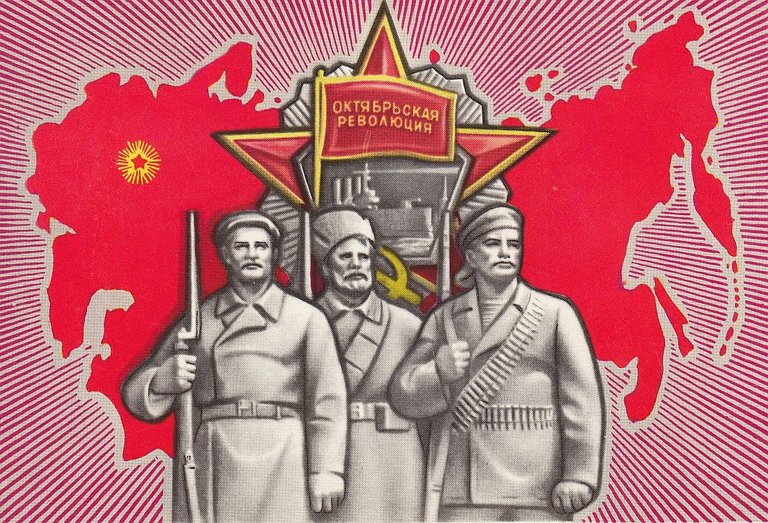
“The October Revolution was not the cause but the consequence of the fall of the Russian Empire, just as the Munich Revolution was not the cause but the consequence of the fall of the German monarchy. The defeat in the war with Japan, just as the bourgeois Revolution of 1905 that was drenched in blood by the Romanovs, foreshadowed the collapse of the Russian Empire in the First World War and the bourgeois Revolution which broke out in February 1917. The Bolsheviks did not build the Soviet Union on the foundations of the Russian Empire, but on its rubble.”
Ljubodrag Simonovic: The Last Revolution
Contents
- Life-creating mind against destructive mindlessness
- The nature of Marx’s critique of capitalism
- Marx’s conception of nature
- Capitalist exploitation of soil
- “Humanism-Naturalism”
- Marx and capitalist globalism
- The cosmic dimension of man
- “Alienation” and destruction
- Destruction of the body
- Homosexuality
- Capitalist nihilism
- Productive forces
- Dialectics and history
- The integration of people into capitalism
- Technique as myth: Zeitgeist fascism (Part 15a) •|• Technique as myth: Zeitgeist fascism (Part 15b)
- Contemporary bourgeois thought
- Politics as a fraud
- Contemporary critique of capitalism
- Bourgeoisie and proletariat
- October revolution
- Contemporary socialist revolution
- Revolutionary violence
- Vision of a future
- Notes
The Last Revolution -- Chapter Twenty
October revolution
(Translated from Serbian by Vesna Todorović/Petrović)
Considering Marx’s notion of history, are the socialist revolutions that took place in the 20th century still historically legitimate? According to Marx, not every existential crisis of capitalism presents a historical an opening door for a socialist revolution; it is more likely to be that crisis that presents the productive (proprietary) relations developing as obstacles to the development of the productive forces with fully developed capitalist contradictions. Social conditions are neccesary but insufficient precursors to a revolution. Socialist revolution is possible only upon the creation of appropriate historical conditions. According to Marx, a possible socialist revolution in the Russian Empire would have had historical legitimacy solely if it had been the spark that ignited the fires of socialist revolutions in the most developed capitalist countries of Europe. In other words, it is only through the emancipatory legacy of the most developed capitalist countries, those brought to full expression by a socialist revolution, that a revolution in under developed capitalist countries could acquire the character of a socialist revolution.

In view of Marx’s notion of a socialist revolution, the Russian Empire in 1917 had none of the historical conditions for a socialist revolution, possessing only the historical conditions for a civil and anti-colonial revolution and the social conditions for a workers’ and peasents’ uprising. In the Russian Empire, the existential crisis did not occur because productive relations had become an obstacle to the development of the productive forces, and, above all, because of the war. Instead of the capitalist contradictions reaching their full intensity in the economic crisis of capitalism due to a halt in the development of productive forces, these contradictions resulted from a general social crisis brought on by the war. The war, as the most lethal form of class exploitation of workers and peasents by capitalists, made the class struggle so acute that it became a class war. The deaths of millions of workers and peasents, military defeats, poverty and mass starvation, brought about the existential crisis that led to a general upheaval of the peasents and workers, directed by the bolsheviks towards revolutionary changes. In the Russian Empire, swept by the storm of the First World War, there were no pertinent historical conditions, but there were existential conditions, and they created the political conditions for a socialist revolution.
The Russian Empire was not destroyed by the Bolsheviks. The October Revolution was not the cause but the consequence of the fall of the Russian Empire, just as the Munich Revolution was not the cause but the consequence of the fall of the German monarchy. The defeat in the war with Japan, just as the bourgeois Revolution of 1905 that was drenched in blood by the Romanovs, foreshadowed the collapse of the Russian Empire in the First World War and the bourgeois Revolution which broke out in February 1917. The Bolsheviks did not build the Soviet Union on the foundations of the Russian Empire, but on its rubble.
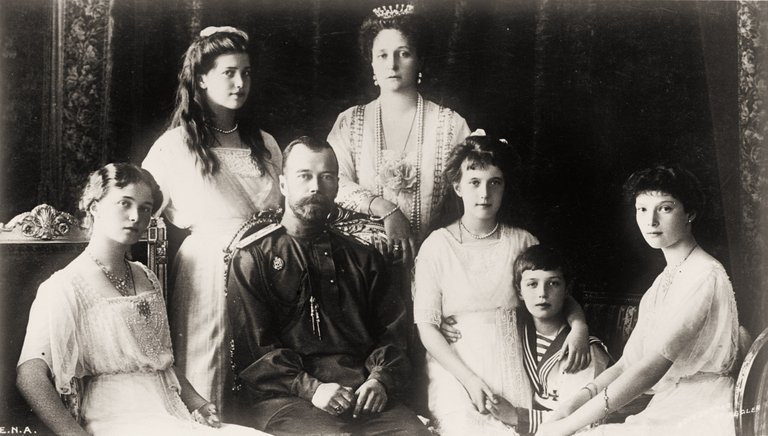
Emperor Nikolai II Romanov with family
Since for Marx the most important criterion for determining the historical legitimacy of any order is whether it advances the development of the productive forces, the October Revolution has the utmost historical legitimacy. In the Russian Empire, capitalism did not develop autonomously. The Russian Empire was a Western colony, and its economic development depended on the economic expansion of the West. The anti-colonial character of the October Revolution was of crucial importance since it enabled the independent development of the Soviet Union and, thus, the development of education, science, the economy, military and industry. It enabled the Soviet Union to go from being a backward agricultural country to being a developed industrial country. By relying exclusively on its own forces and in complete economic isolation, the Soviet Union, 20 years after the October Revolution, became the first scientific and the second economic power in the world. During the Second World War (in spite of over 25 million war dead) it was the strongest military power in the world, which destroyed over 75% of Nazi Germany’s military assets and captured Berlin.
With capitalism becoming a totalitarian destructive order, the October Revolution acquires a new dimension. If the historical development of humankind is viewed in an existential context, and bearing in mind that the development of capitalism is based on the destruction of nature and the entire human race, the October Revolution has a supreme historical legitimacy. Its most important quality is that it abolished capitalism and, with it, the colonial domination of Russia by the most developed capitalist powers. In Russia, as well as in other countries where workers’ revolutions broke out under its influence, the full development of the contradictions of capitalism was halted as an ecocidal and genocidal order, the capitalist destruction of the natural environment in Russia and of its population was stopped. Without the October Revolution and the Soviet Union’s economic, scientific and military potential, the Slavic (and Asian) peoples would have faced the same destiny in the 20th century that befell the original North American peoples in the 19th century. Hitler’s Drang nach Osten was but a continuation of the genocidal march by the capitalist West on the East, beginning in the second half of the 19th century during the Industrial Revolution in Germany, then with the First World War, and continued after the onset of the October Revolution. The western interventionist troops in WWI did not “defend” the Russian Empire, they rather used the uprising of the Bolsheviks as an excuse to deal with the creative potential of the Russian people (and, in that context, with the Russian bourgeoisie), in order to prevent Russia from becoming a power capable of opposing the West in the struggle for global domination. Ultimately, the interventionist countries did not seek to preserve the Russian state, but rather to divide it into protectorates, just as they have done in China, in the Arab world, in Africa, Central and South America, and in the Balkans. The relation of the West towards Russia was based on the ruling principle of monopoly capitalism “Destroy the competition!”, as it had an ecocidal and genocidal nature. The same can be seen today. The West supports only those political powers in Russia which seek to turn Russia into a colony of the most powerful capitalist corporations in the West, those whose intention is to destroy the biological, creative and libertarian potential of the Russian people.
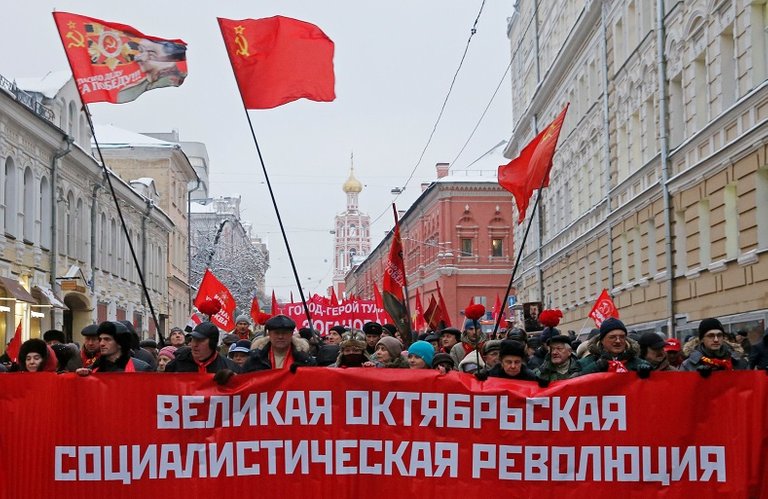
The Great October Socialist Revolution
As far as the humanist legitimacy of the October Revolution is concerned, the Revolution enabled free education for all, resulting in the eradication of illiteracy, which, at that time, afflicted over 80% of the population; universal free healthcare; full employment, the eight-hour work day and the humanization of working conditions; equal value to male and female work (something still non-existent in the most developed capitalist countries); sufferage and other political and civil rights for women; free housing… Most importantly, child labor, which in the Russian Empire as in the West, was exploited up to 14 hours a day, was also abolished. During the industrialization of England, the USA, France, the Russian Empire and other capitalist countries, tens of millions of children died in factories and mines from exhaustion, illness and starvation. As far as the humanist legitimacy of bourgeois revolutions is concerned, the French still celebrate the French Bourgeois Revolution today, although the number of its fatalities far exceeds (in percentage) that of the October Revolution, with over 36,000 members of the French aristocracy being publicly guillotines! And what about the First World War, provoked by capitalists in order to “overcome” the economic crisis of capitalism, in which over 20 million workers and peasents were killed, with the same number wounded; in which millions of children died of starvation and diseases, and whose direct consequence was the “Spanish fever” causing the deaths of over 20 million people? Is this not the crime of capitalists? Another humanist characteristic of the October Revolution was the fact that it pulled the Russian people out of the slaughterhouse of the First World War and, thus, prevented the deaths of millions of people.
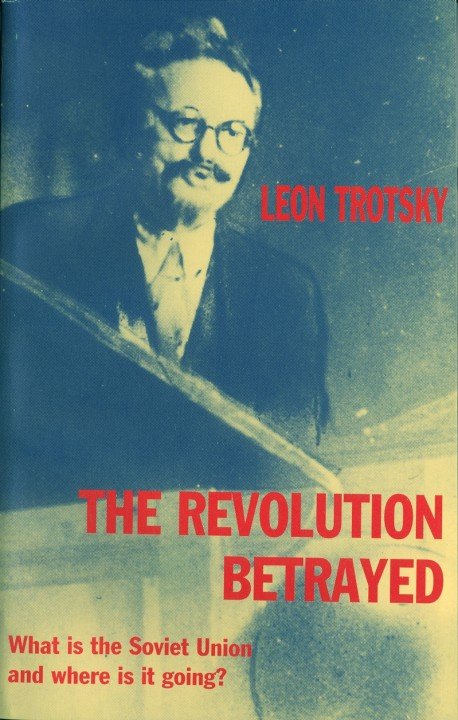
The “Cult of the Party” and the “Cult of the Leader”, which were created during the Revolution, were possible because there were no historical conditions for a true socialist revolution. There was a revolutionary Party, but there was no revolutionary working class. The uprising of the workers and peasents started from “below”, but the Revolution started from “above”. The fanaticism of revolutionary voluntarism was based on the human endeavours needed to bridge the gap dividing a backward Russian Empire from the developed industrial West. Lenin maintains that: “Socialism is electrification plus industrialisation!”. The reality of the undeveloped Russian Empire, devastated by the First World War and then the civil war, had to be “adjusted” to the historical conditions neccesary for a socialist society to be created (and to survive). Socialism in the Soviet Union did not occur at the peak of the development of capitalism or as a product of a historical, and in that context, a general social development; it was rather a politically founded “project” that was to be realized by the Party. The Party leaders literally acquired the status of “social engineers” whose task was to “build socialism” in the Soviet Union, while the “working masses” became the means to that end. One of the most important of Lenin’s theses from that period was that of “taking from capitalism everything that enables the development of socialism”. The mechanicistic nature of this way of thinking indicates the ahistorical nature of the “building of socialism” in the Soviet Union. The voluntarism of the Party leaders, instrumentalised in the apparatus of the state, was primarily conditioned by the fact that capitalism was not eradicated by the Revolution. The struggle against the restoration of capitalism was a strategic point of reference for the ruling order up until its downfall.
The ruling order in the Soviet Union had historical legitimacy only until productive forces were sufficiently developed. When state ownership became the chief obstacle to economic development, it became a burden. Instead of a “corrective” socialist revolution, where the workers would seize power from the corrupt bureaucracy and then directly take over production and the overall processes of social reproduction, those with executive power carried out a coup d’Etat that restored capitalism and turned the Soviet Union into the colony of the most powerful capitalist countries in the West. What Nazi Germany failed to do was acomplished by the “red bourgeoisie” embodied in the corrupt and alienated leaders of the Communist Party. Instead of growing the productive forces, the newly established private ownership led to widespread plundering and the economic, scientific, ecological and biological downfall of the former republics of the Soviet Union. The destruction of the Soviet Union and the “introduction” of capitalism without a mass opposition by the working class was possible because, on the one hand, the ruling political structure was entirely aliented from the workers and had unchallenged power, while, on the other hand, workers in the Soviet Union as abstract “citizens” lost their class authenticity and, thus, their ability to have a say in the life of the country as an organized political force. The disintegration of the Soviet Union by the “red bourgeoisie” marked, in fact, the ultimate defeat of the Soviet working class – a defeat from which it has not yet managed to recover. The dissolution of the Soviet Union, along with the dissolution of Yugoslavia, were the final phase in the destruction of the emancipatory potential of the socialist movement and the establishment of a capitalist dictatorship over workers.
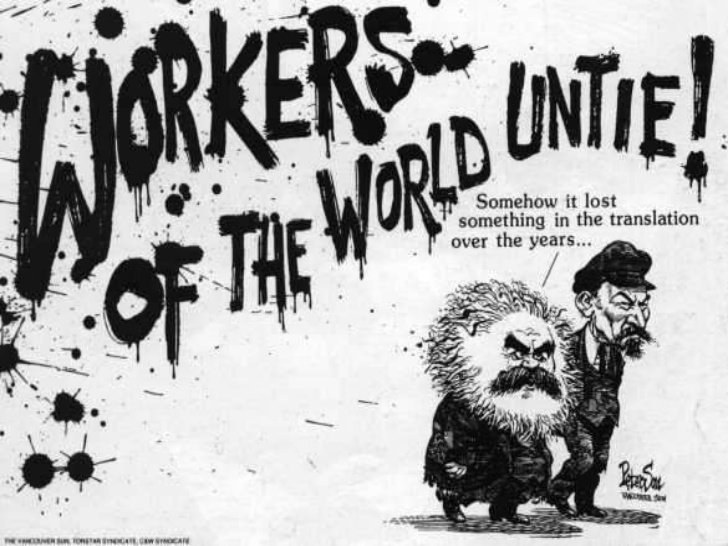
In spite of ever more radical demands for change, the growing existential crisis created by capitalism as a totalitarian destructive order, more and more dramatically destroys any humanist vision of the future. Everybody is drawing a sword. Some intent to kill, some in self-defence. Instead of essence, existence is becoming an unquestionable imperative. The ruling capitalist corporations in the West brought humankind to the brink of the abyss, and the struggle for survival is being carried out on the edge of a cliff. Those who are the weakest will be the first to fall into the void and perish forever. That is the main reason why in Russia, despite the crimes of the Stalinist regime, the “Cult of Stalin” is being revived. The ever deeper crisis of the West and the increasingly aggressive policies based on it, aimed at destroying billions of “surplus” people and seizing foreign territories, has caused Russia to attach great importance to the historical figures who managed to build its economic, scientific and military power and to oppose the West. Stalin is a symbol of victory, which, above all, is a symbol of the existential power of the Russian people, and this is what makes him popular. The same goes for Lenin. His popularity in Russia, as well as in those countries fighting against contemporary imperialism, is based not only on a social (class) character, but, even more, on the anti-colonial nature of the October Revolution and the foundations of the economic, scientific and military power established by it. When the Russian Empire is being commended, the periods referred to are mostly those of state formation. In that context, Peter the Great acquires substantial importance.
The Last Revolution (Part 19) << Previous • Part 20 • Next >> The Last Revolution (Part 21)
Hi! I am a robot. I just upvoted you! I found similar content that readers might be interested in:
https://solonovpolis.wordpress.com/2015/11/08/oktobarska-revolucija-ljubodrag-simonovic/